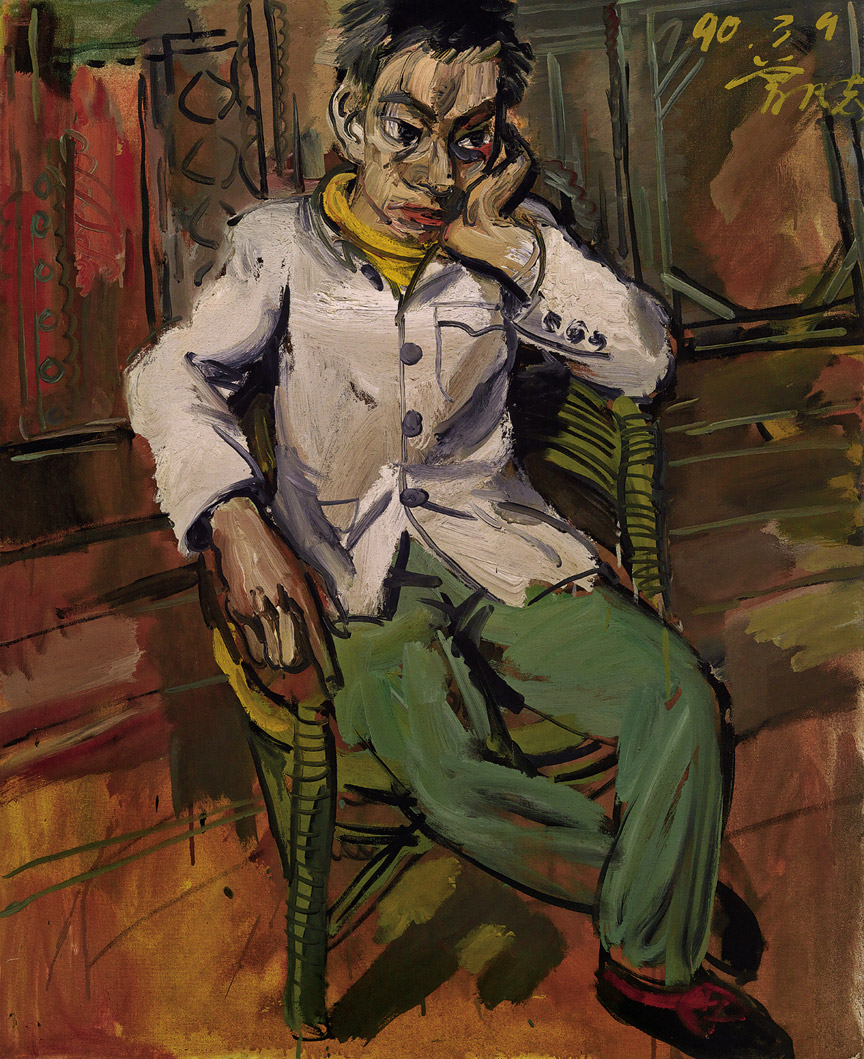Shows
Zeng Fanzhi at Gagosian


Gagosian’s first exhibition by Zeng Fanzhi—incidentally the first Chinese artist to enter the blue-chip stables—provided a surprising overview of recent and early paintings, many from the artist’s collection, ranging from 1989 to several new works completed this year, shown at the gallery’s spacious, new Hong Kong branch.
Zeng, well-known for his series of “masked” figures from the 1990s, continues to set auction records. At Gagosian, the inclusion of earlier works, not for sale but simply exhibition, may have been to offer some background to the auction hype. At Sotheby’s “Contemporary Asian Art” auction on October 3, just a week after the artist’s solo show opened, five of the top ten lots were by Zeng, including Mask Series 1998 No.5, which sold for a reported USD 3.96 million. Previously bought by European collectors, the work of Zeng, alongside Zhang Xiaogang, Yue Minjun and others, is now a firm favorite amongst a burgeoning group of Chinese speculative collectors, who lack diverse local investment options for their sizeable, rapidly-made fortunes and hence are putting money into art.

At the gallery entrance a mature Zeng greeted viewers in Self-portrait (2011), standing confidently in a blue tailored jacket and bright red pants, with characteristically oversized head and hands, his fingers striking a casually interlocked pose. The brushwork is confident, the somber grey-brown tones of the background contrasting the intense oily red—an effect repeated in other portraits where figures are often dressed in some article of eye-catching red. However, the depicted man standing before us, half life-size, seems distant, unable to project his inner world. The characteristic motifs—the mask-like face, smeared quality to the paint, atmospheric drips or washes, as well as heavy, oversized head and hands—signify it is “a Zeng Fanzhi”; but otherwise the academic and distant quality of the work feels like it could be painted by someone else, reminiscent of aristocratic portraits at the root of the genre in Europe. Here the artist becomes just another character in a largely European canon. Similar recent works were portraits of Pablo Picasso and Lucien Freud both from this year, as well as two earlier portraits of Francis Bacon, from 2010 and 2008. In the ostensibly anonymous, Portrait (2009), one also finds patron-collector Uli Sigg, a great supporter of Chinese contemporary artists, in a pale pink shirt.
The eye skimmed easily over such slick portraits, their rich whites, reds and greens, and their lavish frames creating a formal contrast to the raw brown canvas backgrounds, which Zeng has begun to leave untouched. This contrast demonstrated the almost decadent skill of an established artist, sure of his style and prestige at home and abroad.
Yet the highlights were elsewhere, in early works from the late 1980s and early 1990s. A Man in Melancholy (1990) is a classic portrait of angst, of a man slumped in a chair, holding his head in his hand, painted in a loose impressionistic style, which might be read as a portrait of many artists in the years immediately after the Tiananmen incident of 1989. In the large triptych No.1 Hospital Triptych (1991), different stages of medical diagnosis, surgery and recovery are depicted in strong lines on bleak backgrounds. In a small but beguiling canvas, Meat (1993), a naked man’s pink flesh blends into a piece of meat he is laying astride, suggesting some desperate, carnal emotion. This visceral quality is even stranger in the larger painting, Man and Meat (1993), showing a frenzied abattoir, with butchers handling meat while large fleshy tigers devour carcasses in the foreground.
These works appear less technically accomplished, with rough clunky lines and muddy colors, and less complex handling of space and symbolism, yet they nevertheless have an ambitious energy, urgency and intrigue. If there is more introspection in the “mask” series, as Zeng’s symbolism matured, it seems to have evaporated from the most recent portraits. Though he is no doubt one of the most significant Chinese contemporary painters, Zeng may be burdened by such success, now replicating and refining a signature style that eclipses his subject. Like a number of his compatriot artists who have been favored by the market, perhaps he faces the dilemma of how to meaningfully reflect or comment on the forces of rapid social and material change in China, while being symptomatic of them.







